The 1914 movie serial “The Perils of Pauline,” was the ultimate cliffhanger. Week after week, Pauline escaped airplane crashes, searches for buried treasure, and multiple abductions. She was even carried away in a hot air balloon. But contrary to legend, the original Pauline was never tied to a railroad track, or nearly sawed in half by a buzz saw.
Pauline’s perils made great cliffhangers, and kept moviegoers crowding the theaters for some twenty episodes.
Cliffhangers are the hooks that make your readers keep turning the pages, pulling them into the next scene or chapter. Most cliffhangers come at the end of the chapter. If your readers are hooked, they’ll continue reading.
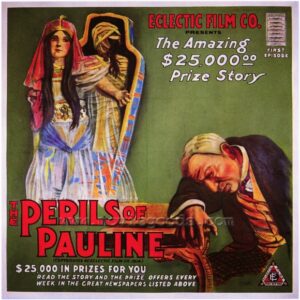 Here are some tips for good cliffhangers:
Here are some tips for good cliffhangers:
A cliffhanger should catch your readers by surprise.
Something unexpected has to happen: Someone threatens to jump off a bridge. Their car goes into a skid on a snowy curve. A door opens unexpectedly. Then, bam! The chapter ends.
Darkest Evening, Ann Cleeves’ new Vera Stanhope novel, has a perfect cliffhanger chapter ending. Vera follows a killer, who gets her alone and strangles her. I’ve edited out the killer’s name in this section, but you get the idea.
“As Vera began to lose consciousness, she thought that this was her fault. . . it was her pride again, making her think she was indestructible.
“Then the world went blank.”
I couldn’t wait to turn the page and see what happened to Vera. Not to mention the killer.
Someone unexpected arrives. A crook, an innocent person, a cop, just in time. This person is a surprise. They abruptly break up the scene.
Someone leaves.
A bride suddenly leaves the groom standing at the altar. A couple is fighting, and he walks out on her. She suddenly quits her job.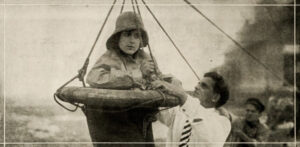
Sometimes, the cliffhanger is a new piece of information.
Your character learns something. She’s not married legally to her husband after all because he never divorced his first wife.
Or, he’s not the son of the man he called father: the DNA test proved it.
Your character notices something. The detective sees the scratches around the door lock and realizes the house had been broken into. A wife finds lipstick on her husband’s shirt – scarlet lipstick. She never wears that color.
Your character figures something out. She finally understands the key to the puzzle the dead man left behind. He finally knows why his dead father wanted him to listen to the CD he left in his desk drawer.
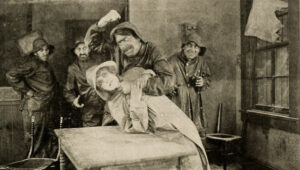 Your character decides something. She’s going to leave her abusive husband. He’s going to rob the store to get enough money to feed his family.
Your character decides something. She’s going to leave her abusive husband. He’s going to rob the store to get enough money to feed his family.
She’s going back to school.
Your character feels something. I looked at my husband of twenty years, and wondered, “Why had I married him? What did I ever see in him? Maybe it was time for me to walk away.”
Or, I looked at his picture, and suddenly, I couldn’t see it any more I was blinded by rage.
Your character makes a demand. “Get me to the hospital now!” she told the cabbie. “There’s fifty dollars if you make it in ten minutes!”

How do you end a chapter with a cliffhanger if nothing new is happening? Give a simple pastime a feeling of foreboding.
Agatha Christie, in The A.B.C. Murders, does that. Tom Hartigan and Lily Marbury are out for a carefree night of dancing while a killer stalks the area. Dame Agatha writes:
“They danced on happily – in their conscious minds nothing but the pleasure of being together.
“In their unconscious minds something stirred . . .”
Your character doesn’t show up. In Jeff Abbott’s thrillers are chockfull of cliffhangers. In Cut and Run” Claudia is in a booth at a Mexican restaurant, waiting for Judge Whit Mosley, a man on the run.
“Claudia traced the beer rings on the worn wooden table, waiting for Whit, waiting to see if he was still the man she knew, afraid of what she heard in his voice.
“The nachos grew cold. Whit never showed.”
Whit’s no-show is a cliffhanger and one reason why Jeff’s books are page turners.
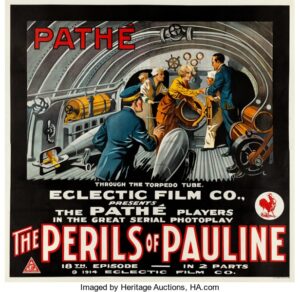
Give your readers a sense of menace.
Let them know your characters will be going off to a dangerous place or a risky situation. Or something has happened that will change everything.
Before She Was Helen, by Caroline B. Cooney has some first-rate cliffhangers. Like this one:
Helen thought, “Cold cases are solved by DNA and fingerprints.
“Her fingerprints.
“Which were on the doors and knobs at Dom’s and the Coglands’ houses.
Where the police would shortly be summoned to reunite a stolen artwork with its owner.”
Would Helen’s guilty past catch up with her? I kept reading to find out.
Tick-tock. Time is running out. This is a favorite plot device in thrillers.
“He looked at the clock. He had two hours before the terrorists blew up the bus full of school children. He had to find them.”
Unexpected news. Important information, or a person, shows up unexpectedly. End your scene with the protagonist receiving devastating news: his wife is dead. His office was blown up. Her partner was shot in a hold-up.
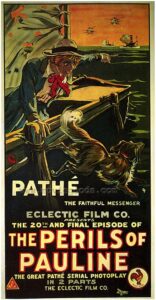 Cliffhangers you should avoid. Two of them are: “If I’d only known,” or “Had I but known.”
Cliffhangers you should avoid. Two of them are: “If I’d only known,” or “Had I but known.”
I ended a chapter like that and my editor cut the line. She told me it was a cliche.
Ending a novel with a cliffhanger.
Sounds like a good idea, doesn’t it? But it often ticks off your readers and leaves them feeling frustrated. Don’t do it. Unless, like Pauline, your new episode is available next week.
&&&&&&&&&&&&&&&&&&&&&&&&&&&&&&&&&&
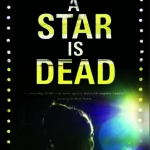 Good news! A Star Is Dead, my fifth Angela Richman mystery, sold out its first printing. Buy your copy here: https://www.amazon.com/s?k=a+star+is+dead+elaine+viets&i=stripbooks&crid=1CW21L13TBKUZ&sprefix=A+Star+is+Dead+%2Caps%2C185&ref=nb_sb_ss_c_2_15
Good news! A Star Is Dead, my fifth Angela Richman mystery, sold out its first printing. Buy your copy here: https://www.amazon.com/s?k=a+star+is+dead+elaine+viets&i=stripbooks&crid=1CW21L13TBKUZ&sprefix=A+Star+is+Dead+%2Caps%2C185&ref=nb_sb_ss_c_2_15

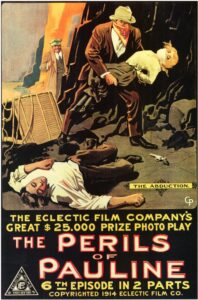
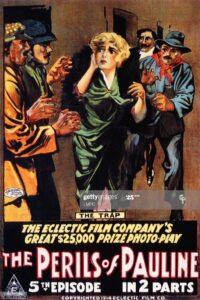
One of my critique partners refers to these as “landings.”
I learned long ago that if I was to get any sleep, I had to stop reading mid-page, and not go to the end of a chapter–that is, if the author was any good.
I’m with you all the way when it comes to authors who end books on cliffhangers. That’s going to be the last book of theirs that I read.
Yep, I got suckered into a couple of those, Terry. My eyes won’t be “landing” on their pages any more.
Terrific post, Elaine! The way you categorized the many variations of cliffhangers is really helpful.
The illustrations were great fun also.
Thanks for a good start to the morning.
Good to see you here, Debbie. Cliffhangers are a real science. I’ve barely scratched the surface.
Elaine, I’d be interested to read more if you scratch deeper! Part 2?
Definitely a good idea.
Excellent run-down, Elaine. I try to end *every* scene with a “Kicker” (my term for Cliffhanger). Because it kicks the reader into the next scene.
“Kicker” is a good way to describe it, Harald. We want those readers to keep moving.
Elaine,
This is great information. Cliffhanger chapter endings was one of the valuable lessons I took away from my first novel-writing experience.
Like others, I don’t like it when an author ends a book with a cliffhanger. It’s like a broken promise. IMHO, every book should stand on its own.
And congratulations on the success of “A Star is Dead.” I just scooted over to Amazon and got the first of the series to work my way through.
“Like others, I don’t like it when an author ends a book with a cliffhanger. It’s like a broken promise. IMHO, every book should stand on its own.”
Terrific description, Kay. A cliffhanger is indeed a broken promise. Hope you enjoy the Angela Richman series.
Dick Francis made a career of “had-I-but-known” scenes. So have many successful Gothic and romantic suspense writers. But they were used judiciously and never as an end-of-chapter cliffhanger.
I imagine most of us here with a backlist have a running private joke we amuse ourselves with in most of our books. Mine were literal cliffhangers. It was a rare book that my heroine wasn’t dangling or falling somewhere, and I changed it up enough for readers not to expect it. Falling off a two-story-high catwalk to catch a useless short rope above a stage in Vegas, disappearing in to a gorge on an alien planet, being knocked backwards on a spiral staircase with villains close on the heels, etc. And, I never had the same solution for each. Fun.
(NOTE: A kitten saved one heroine who was genuinely dangling by her fingers on a rock face. Life rescues, not just for Lassie.)
“Mine were literal cliffhangers. It was a rare book that my heroine wasn’t dangling or falling somewhere, and I changed it up enough for readers not to expect it. Falling off a two-story-high catwalk to catch a useless short rope above a stage in Vegas, disappearing in to a gorge on an alien planet, being knocked backwards on a spiral staircase with villains close on the heels, etc. And, I never had the same solution for each. Fun.”
You’ve revealed our secret, Marilynn. We enjoy torturing our characters.
“Just one more chapter…” has cost me many hours of sleep. Even when I re-read something, I tend to need to turn the page.
Ending a novel with a cliffhanger.
Sounds like a good idea, doesn’t it? But it often ticks off your readers and leaves them feeling frustrated. Don’t do it. Unless, like Pauline, your new episode is available next week.
This is the bane of the 99 cent Kindle book. Book one is 99 cents. To find out who done it, you need to fork over $6.00 for book two. I call fowl. And I have yet to find one that made me want to buy book two.
One of my favorite authors has more than two dozen books now in four series. While best read, 1,2,3 you can pick up any one of them and have a complete story. And all of them are complete stories.
I didn’t realize that those 99 cent books pulled that stunt, Alan. It’s a cheap trick, in more ways than one.
I read lots of books from self-pubs, up to 200 a year, and I’ve never read an author who did that. The first book in a series is often cheaper or free as a gateway drug to the series, but it is novella or novel length. Samplers which are the first few chapters are free with the exception of a few bestselling, traditionally-published authors whose publisher thinks this is a great idea.
A truism for selling a book is that the first chapter sells the book. The last chapter sells the next book, but not because it doesn’t have an ending. That just creates frustration and anger in the reader. The ending should make the reader feel satisfied yet hungry for another great story by this writer.
Totally agree, Marilyn. We have to keep our readers satisfied and hungry at the same time.
The timing of this post, for me, is perfect. I’m revising my novel WIP that I set aside for a time, and am now looking forward to seeing how cliffhangars will fit in the chapters and the overall story arc. Thank you, Elaine, and congratulations on selling out the first printing of “A Star Is Dead”.
Glad I could help, Jenise. That’s why Kill Zone is here. Good luck with your WIP.
Ooo, I love this smorgasbord of cliffhanger strategies! ‘Tis worth bookmarking. Thanks, Elaine!
Thanks, Rick!
Pingback: 🖋 Writing Links Round Up 9/18 – B. Shaun Smith